Christopher Bernard Wilder, a.k.a. "The Beauty Queen Killer", was a (possibly prolific) Australian ephebophilic serial rapist, robber, abductor, and serial-turned-spree killer.
Background[]
Wilder was born on March 13, 1945, in Sydney, Australia. He was the oldest child of an American naval officer and an Australian native. According to The Encyclopedia of Serial Killers written by Michael Newton, he had been so close to death immediately after his birth that a priest performed last rites. Though he recovered, Wilder was a sickly child; at the age of two, he nearly drowned in a swimming pool, and in the following year, he fainted from a fit of convulsions. In his early adolescence, he began peeking through windows, and at the age of seventeen, he and a number of friends were arrested for the gang-rape of a girl on a Sydney beach. Pleading guilty for the offense, he received a year of probation with counseling and electroshock therapy, the latter of which apparently fueled fantasies of himself having sex with women and electrocuting them during the process. At the age of 23, Wilder married a woman who quickly left him within weeks after discovering his dark sexual tendencies. Sometime afterward, he tried coercing a nurse into having sex with him, using pictures of naked women in a briefcase, but she went to the police instead. Managing to avoid charges, Wilder immigrated to the U.S. in 1969 and settled in Florida. Due to a boom in the electrical and construction business, Wilder managed to make his life successful, and he bought a home, began racing cars, and developed a hobby of photography; his success was further enriched when he went into real-estate.
In 1971, Wilder was turned over to police when he tried to get women to pose for nude photographs. He was only fined for the offense but was soon arrested again when he tried to force a high-school student into having oral sex with him in a home that was under renovation. Going to court, Wilder revealed a fantasy of himself masturbating to the image of a girl being raped as a response to the judge's question of whether he was sane enough to stand trial or not. During the resulting trial, a doctor and a psychiatrist evaluated him and recommended supervised treatment. Other than that, Wilder was acquitted. Three years later, Wilder, posing as a photographer named David Pierce, managed to lure a schoolgirl out of a Florida shopping mall, drugged her, and forced her to have sex with him in his truck. Releasing her, the girl turned Wilder into police, but he managed to plea-bargain the charges down to probation with therapy, claiming to have blackouts during weekends. He saw a sex therapist, who believed that, over time, Wilder made progress during their sessions. However, Wilder, upon returning to Australia to visit his parents, abducted two teenage girls from a beach, tied them up, forced them to pose for nude pictures, bound them into subservient positions, and masturbated over them; he then released them, and they went to the police. Arrested, Wilder was bailed out by his parents and was allowed to return to Florida until his trial, which was set to begin in five months. However, the trial was repeatedly postponed, and by the time the hearings were scheduled to occur on April of 1984, he managed to escape their radar.
Killing Spree, Manhunt, and Suicide[]
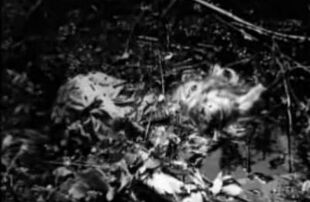
The crime scene of one of Wilder's victims.
On March 4, 1984, 23-year-old Elizabeth Kenyon, who taught emotionally disturbed children at Coral Gables High School, disappeared in Miami, Florida. Hours prior to her disappearance, she had met up with her parents, and her father noticed bruises on her arms and legs, though she stated it was from a schoolyard fight that she broke up. Wilder, who was Kenyon's ex-boyfriend, became one of three suspects in her disappearance, but he was let go after alleging that he had not seen her in a month. However, another ex-boyfriend of Kenyon's, showing around pictures of her in an effort to find her, was pointed to Wilder's direction by two gas station attendants, and Kenyon's car was subsequently found at Miami International Airport, though no evidence indicated that she had packed to go on a trip by plane. Police later classified Wilder as a main suspect in Kenyon's disappearance due to his lengthy rap sheet of sexual offenses. Later, they made a link between Kenyon's disappearance and that of 20-year-old Rosario Gonzalez, who knew Wilder and shared several physical and professional attributes to Kenyon. A private investigator and a former police officer interviewed Wilder, who continued to deny seeing Kenyon, but a subsequent interview with his secretary proved otherwise. On March 13, during his 39th birthday, Wilder read a newspaper announcing him as a suspect in Kenyon and Gonzalez's disappearances and subsequently fled. The day after he left Miami, he picked up 21-year-old Terry Ferguson from the Merritt Square shopping mall in Satellite Beach, Florida, and killed her, leaving her body in a snake-infested canal where it would be found five days later. While fleeing, he got his car stuck in sand at a state road near Canaveral Groves, and was able to successfully call a tow-truck to get it out.
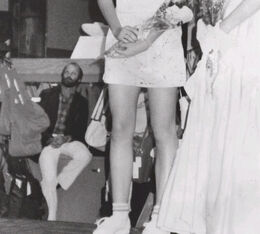
Wilder (left) in a Las Vegas fashion show during his killing spree.
Wilder's next target was 19-year-old Linda Grover, whom he took from a shopping mall near Florida State University in Tallahassee. Taking her to a motel in Bainbridge, Georgia, he raped her twice and tortured her by electrocution. When he became distracted by the television set, Grover fled into a bathroom, locked the door, and began screaming as loud as she could, startling other guests. Panicked, Wilder fled with several of Grover's belongings and went to Beaumont, Texas, where he tried to lure out 24-year-old Terry Walden with a proposition in photographing on March 23, but she turned him down. Two days later, Walden disappeared, and her body was found three days afterward, with multiple stab wounds and indication that she had been tied up with different types of rope, but no evidence of sexual assault. At this point, the FBI was called in to assist in the manhunt. On March 25, 21-year-old Suzanne Logan went missing from an Oklahoma City, Oklahoma shopping mall and was found dead the next day; at that same time, 18-year-old Sheryl Bonaventura disappeared from a Grand Junction, Colorado shopping mall. At this point, Wilder's case received nationwide media attention, with everyone urged to be on the alert for him. Not killing Bonaventura, Wilder instead kept her as a hostage until reaching Las Vegas, Utah, where he killed her on March 31. The next day, on April Fool's Day, 17-year-old Las Vegas citizen Michelle Korfman disappeared. Two days later, Wilder was placed on the FBI's Ten Most Wanted list. At that point, the Behavioral Science Unit, led by John Douglas, created a profile on him (see below), while media outlets dubbed Wilder as The Beauty Queen Killer.
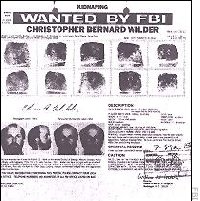
FBI wanted poster for Wilder.
Around the same time he was placed on the Ten Most Wanted list, Wilder, driving to a location north of Torrance, California, lured in 16-year-old Tina Marie Risico and assaulted her, but did not kill her for he believed her to be "robotic enough" to help him abduct more victims. Cutting her hair short, allegedly to make her resemble a female character from the movie Flashdance, he then drove her to Gary, Indiana, and forced her to lure in Dawnette Wilt, also 16. Attacking her, he was able to rape her in his car while Risico drove it. During their brief stops at Ohio and New York, Wilder tortured Wilt by electrocution and raped her again, all the while threatening her and Risico that he would kill them both if they tried to escape or draw attention to themselves. The next day, Wilder saw an appeal for Risico's return on the news, which prompted him to take them both to a forest near Penn Yan, New York, where he attacked Wilt. First trying to suffocate her but failing, he then stabbed her twice in the front and back and left her for dead. Surviving the stab wounds, Wilt wandered out of the forest and was found and taken to a hospital. Meanwhile, near Victor, New York, Wilder once again forced Risico to lure in another woman, 33-year-old Beth Dodge. Abducting her, he took her to an empty gravel pit, where he fatally shot her in the back with a .357 Magnum revolver and disposed of her body in the pit. He and Risico then abandoned the car and took Dodge's. Seemingly knowing that the end was near, Wilder released Risico at the Logan Airport in Boston, Massachusetts, telling her that she'd rather not be with him when he died. Fearing for her life, Risico boarded the plane and arrived in Los Angeles, where she went to the local police.
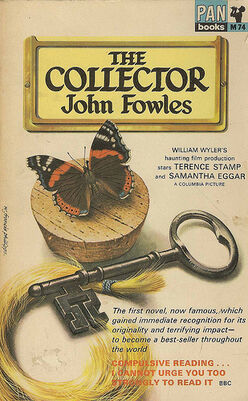
The Collector.
On April 13, Wilder managed to lure in a 19-year-old girl from the side of a road in Beverly, Massachusetts, when her car broke down. However, when he threatened her with his revolver, she managed to escape when he was forced to slow his car down. Panicking, Wilder abandoned several items, including the camera he used to authenticate himself, his suitcase, and objects he took from his previous victims, and fled to New Hampshire. At a Colebrook service station, just twelve miles from the Canadian border, Wilder attracted the attention of two state troopers; some have stated that the troopers recognized his car from descriptions given by the FBI, others claimed that the troopers recognized the car from recent news reports, and some have even made claims that Wilder was acting strangely enough to warrant an investigation from them. Pulling him over, the troopers approached Wilder, to which he dove into his car, apparently for his revolver. The troopers tackled him, but Wilder was able to get his revolver in time and fired two shots. One struck Wilder, passing through his body and wounding one of the troopers, Leo Jellison (who had jumped into his back while reaching for the gun), in the chest, with the bullet lodging in his liver; the other fatally hit Wilder's heart, ending the 26-day-long killing spree and manhunt. A number of items were recovered from Wilder's car, including the revolver, extra ammunition, handcuffs, rolls of duct tape, rope, a sleeping bag, his business partner's credit card, a homemade electrical cord that he used to torture some of his victims, and The Collector, a novel by John Fowles.
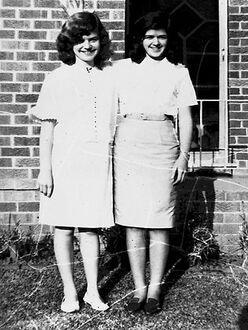
Christine Sharrock (left) and Marianne Schmidt (right).
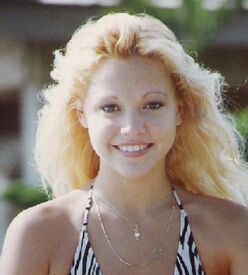
Tammy Lynn Leppert.
After his death, it has been suggested that when the police began to close in on him, he had already decided to kill himself, but that he also wanted a final killing spree before doing so. Yet, given the fact that he went to California and then New Hampshire, it seemed more likely that he was trying to flee to another country, Canada. He had gotten fairly close to the Mexican border, but something must have made him decide to turn around and go back across country; it is believed that his intent to cross into Canada is unlikely, since he didn't choose a populated place to do so, but when he died, he was ten minutes from the border. However, this would never be officially known. On May 3, a month after her disappearance, Sheryl Bonaventura was discovered under a tree in Las Vegas. Eight days later, Michelle Korfman's body was found on May 11 at a roadside rest stop in southern California, near the Angeles National Forest; it was so badly decomposed that the identification process took for almost a month. Many other murders were suspected by authorities to have been perpetrated by Wilder as well. Women who were found dead in locations where Wilder was known to have been at during his spree were suspected by authorities to have been murdered by him as well. In Australia, he was linked to the deaths of two fifteen-year-old girls, Christine Sharrock and Marianne Schmidt, who were both murdered on January 11, 1965. Wilder was also suspected to have been behind the July 6, 1983 disappearance of actress Tammy Lynn Leppert, with Leppert's family filing a $1 million lawsuit against Wilder before his death, but the suit was dropped afterward. Leppert's mother, modeling agent Linda Curtis, would go on to state that she never believed him to have been involved in Leppert's disappearance. Also, two unidentified women found on property in Loxahatchee, Florida, owned by Wilder were also linked to him. Wilder's body was later cremated in Florida, and he left a personal estate worth almost $2 million.
Modus Operandi[]
Operating in multiple U.S. states, starting in Florida, Wilder targeted pretty young women, most of whom he lured in with the promise of photographing them. After subduing them, he would torture and rape them, and then kill them by either shooting them with a .357 Magnum revolver, stabbing them with a knife, or strangling them. In the case of Sheryl Bonaventura, she was both shot and stabbed. At least two of the victims were tortured by electrocution with a homemade electrical cord. His first two victims were women known to him, both of which whose bodies were never found, but after he was declared a suspect in their disappearances, Wilder targeted random women. A number of the victims were taken from local shopping malls.
Profile[]
Unlike most of the serial killers the Behavioral Science Unit had tracked down, they knew who the perpetrator was; they just did not know where he currently was or where he would strike next. Several times, authorities would arrive at a motel or a restaurant he was previously at, within hours of his departure. He kept stealing license plates and driving in erratic directions, therefore becoming exceedingly difficult to predict. Many judge him to be a classic serial killer, but there are many criminologists who classify him as a spree killer, yet if he had indeed murdered the two women he had abducted in Florida and had continued in that pattern, without getting nervous and running, then he would be a serial killer. In fact, there was some evidence later that he might have killed several years before. He was compulsive about killing, which, to him, was a sexual addiction. He was a charming white male in his 30s, spurred by sexual fantasies and excited by a certain type of victim (in this case, beautiful young women who could be models), hence the nickname "The Beauty Queen Killer". He was highly mobile, willing to drive long distances to continue doing what he was doing. Putting him on the Ten Most Wanted list generated more publicity about him traveling across the country, and made it clear that catching him was an urgent matter. Authorities monitored the use of the credit cards Wilder had stolen from his partner, but it was still difficult to determine where he was going. They expected that at some point he would try leaving the country; the most probable choice for him was Mexico, since the Mexican government would not extradite a man who might face the death penalty or life without parole, as Wilder surely would do, or, at the very least, it would take years.
To try to acquire a better sense of Wilder's personality, people who knew him were interviewed by police. His business partner stated that he spent a lot of his time watching television because he didn't have much else to do, while others claimed that beautiful women went to his home in droves. He even had a girlfriend who could not believe the charges, although she recalled several strange incidents. Once, Wilder had commanded her to leave his home, fearing he might hurt her; and another time, she had woken up to find him at the foot of her bed, with him claiming that he did not know how he had gotten there or why. In one notable incident, someone brought forward photographs that Wilder had left for developing, which included women he did not know and also prepubescent children; he had told his girlfriend that his photography hobby was a sickness, but he was compelled to do it. In Florida, the manager of a dating service offered local authorities a tape that Wilder had made in 1981. In it, he talked a lot about himself and described his desire for a long relationship, but not marriage, and that he was seeking "depth and sincerity". He also indicated that he preferred women aged in their early 20s. The FBI broadcast the tape to help women who were approached by him to see him for what he was. He could be anywhere, and any beautiful woman was a potential victim. There were also a lot of shopping malls around the country, where Wilder could easily see a beautiful woman that caught his interest, and one thing that they knew was that he would not stop abducting and killing potential victims until he was caught.
Some authors have called him a "nomadic killer", as if he chose to go from place to place, like Ted Bundy. However, it should be noted that he seemed to have learned in Australia that one way to elude a trial was to just leave the country. It was also clear to him in Florida that he would have to leave the state. He was less the intentional nomad and more likely a killer on the run who grabbed opportunities to rape and kill as he saw them. He also demonstrated the fact that some serial killers use different methods to kill; he used suffocation, stabbing, and shooting as methods of killing his victims, with one victim, 18-year-old Sheryl Bonaventura, being both stabbed and shot. Several victims were released, many were tortured, but some were merely killed for their cars. Some were left in rivers, some in rest areas, and one in a gravel pit. Despite the variation of motivations and methods of killing, he kept his victim type relatively stable. Psychologist Al C. Carlisle believes that serial killers express a divided personality. Wilder had exhibited a good side that fooled people, he points out, and then a bad side that harmed them. He was able to maintain a public persona of an upstanding citizen who ran a successful business, even as he entertained and acted out his darker fantasies. As each one was played out, and as life became more disappointing, Wilder's fantasies became more violent.
Known Victims[]
Confirmed
- January 4, 1963, Sydney, Australia: Unnamed young woman (was gang-raped by him and a number of friends, but not killed)
- c. 1974, unspecified location in Florida: Unnamed schoolgirl (drugged and forced into having sex with him; was released)
- c. 1982, Sydney, Australia: Two unnamed teenagers, both 15 (abducted, bound, and masturbated to; both were released)
- c. 1983, Boynton Beach, Florida: Two unnamed girls, 10 and 12 (abducted and forced to perform oral sex on him; both were released)
- The 1984 killing spree:
- February 26, Miami, Florida (disappeared): Rosario Gonzalez, 20 (an acquaintance of Wilder's; her body was never found)
- March 4, Miami, Florida (disappeared): Elizabeth Kenyon, 23 (Wilder's ex-girlfriend; her body was never found)
- March 14, Satellite Beach, Florida: Terry Ferguson, 21 (killed by unknown causes)
- March 20, Tallahassee, Florida: Linda Grover, 19 (survived; was taken to Bainbridge, Georgia; glued her eyes shut, tortured by electrocution, assaulted, raped, and robbed; she escaped)
- March 23, Beaumont, Texas: Terry Walden, 24 (stabbed repeatedly)
- March 25, Oklahoma City, Oklahoma: Suzanne Logan, 21 (tortured, raped, and stabbed)
- March 26-31, Las Vegas, Utah: Sheryl Bonaventura, 18 (abducted from Grand Junction, Colorado, and held captive; was shot and stabbed)
- April 1, Las Vegas, Utah: Michelle Korfman, 17 (killed by unknown causes)
- April 3[1], north of Torrance, California: Tine Marie Risico, 16 (abducted, assaulted, and held captive; was released over a week later)
- April 7-8[2], near Penn Yan, New York: Dawnette Wilt, 16 (survived; abducted from Gary, Indiana; raped and tortured by electrocution repeatedly; attempted to suffocate, then non-fatally stabbed twice and left for dead)
- April 8-13[3], near Victor, New York: Beth Dodge, 33 (shot in the back and her body dumped in a gravel pit)
- April 13:
- Beverly, Massachusetts: Carol Hilbert, 19 (abducted, threatened with his revolver, and intended to kill; she escaped)
- Colebrook, New Hampshire: Leo Jellison (New Hampshire state trooper; shot in the chest when Wilder shot himself; survived; the bullet was lodged in his liver)
Possible
- January 11, 1965, Wanda Beach, Australia: The Wanda Beach murders:
- Christine Sharrock, 15 (bashed her head, then stabbed her repeatedly)
- Marianne Schmidt, 15 (stabbed repeatedly and her throat slashed)
- 1981, Fort Myers, Florida:
- January 16: Mary Optiz, 17 (disappeared; was never found)
- February 11: Mary Hare (disappeared at the same location as the above victim; was stabbed in the back)
- Unspecified date in 1982, Loxahatchee, Florida (found): Two unidentified women (found on Wilder's property; one apparently had her fingers cut off)
- July 6, 1983, Rockledge, Florida: Tammy Lynn Leppert, 18 (disappeared; was never found)
- 1984:
- February 16, Davie, Florida: An unidentified young woman (fatally strangled)
- March 7, Collier County, Florida: Melody Gay, 19 (disappeared)
- March 13, Daytona Beach, Florida: Colleen Orsborn, 15
- Note: The perpetrator of the Wanda Beach murders is also suspected to have killed two more women in 1966, both of whom weren't linked to Wilder. They are:
- January 29, Wollongong, Australia: Wilhelmina Kruger, 56 (strangled and mutilated post-mortem)
- February 17, Menai, Australia: Anna Dowlingkoa, 22 (killed by unknown causes; was mutilated post-mortem, body was discovered on February 26)
Notes[]
- The Collector, the book that was under Wilder's possession at the time of his spree, also appears to have served as inspiration for some other killers. Leonard Lake was inspired by the book to abduct and imprison women, while Robert Berdella, a.k.a. The Kansas City Butcher, who abducted young men and tortured them, photographing the process, claimed to have been inspired by the movie adaptation.
- In the Wanda Beach Murders, Wilder was one three suspects named.
On Criminal Minds[]
While Wilder was never directly mentioned or referenced on the show, he appears to have been an inspiration for the following unsubs:
- Season One
- Mark Gregory ("Charm and Harm") - Both were serial-turned-spree killers, abductors (Gregory only once), and rapists (Gregory only once, and statutory) who experienced drowning as children, repeatedly peeped at neighbors and committed sex crimes prior to their murders, were married and divorced, had successful lives before their killing sprees (which included jobs in real-estate and photographing, as well as racing cars), operated in multiple U.S. states (starting with Florida and Georgia), targeted women either known to them or at random, tortured at least one of their victims by electrocution, were able to continue killing despite authorities knowing they where responsible for the killings, and both ultimately died by gunshot in a standoff with police while attempting to kill a final victim.
- Season Five
- Billy Flynn ("Our Darkest Hour") - Both were abductors (Flynn only once), serial rapists, and serial turned spree killers who were convicted of violent crimes when underage, received short or reduced sentences despite the violence of their crimes, applied childhood experiences to their later crimes (Flynn locked children in closets from him watching through a closet door his mother prostituting herself, while Wilder's sexual sadism involved electrocution due to shock therapy), killed victims across the United States, shot their victims with a revolver (though both used other means), repeatedly raped their female victims (the only gender of victims Wilder targeted), were given nicknames for their crimes, abducted a victim to force them to be complicit in their crime spree, were active despite law enforcement knowing their identities, and both ultimately died from a gunshot in a standoff with police while attempting to kill at least one final victim.
Sources[]
- Wikipedia:
- TruTV Crime Library articles about Wilder
- Law & Ordnance description on Wilder and his spree
References[]
- ↑ It is actually unknown as to when Tina Marie Risico was abducted, but it can be assumed it was around the time he was placed on the FBI's Ten Most Wanted list
- ↑ It is actually unknown as to how long Dawnette Wilt was attacked and held captive, but it can be assumed it started around the time Wilder and Risico temporarily stayed at Taos, New Mexico
- ↑ Date further unspecified
